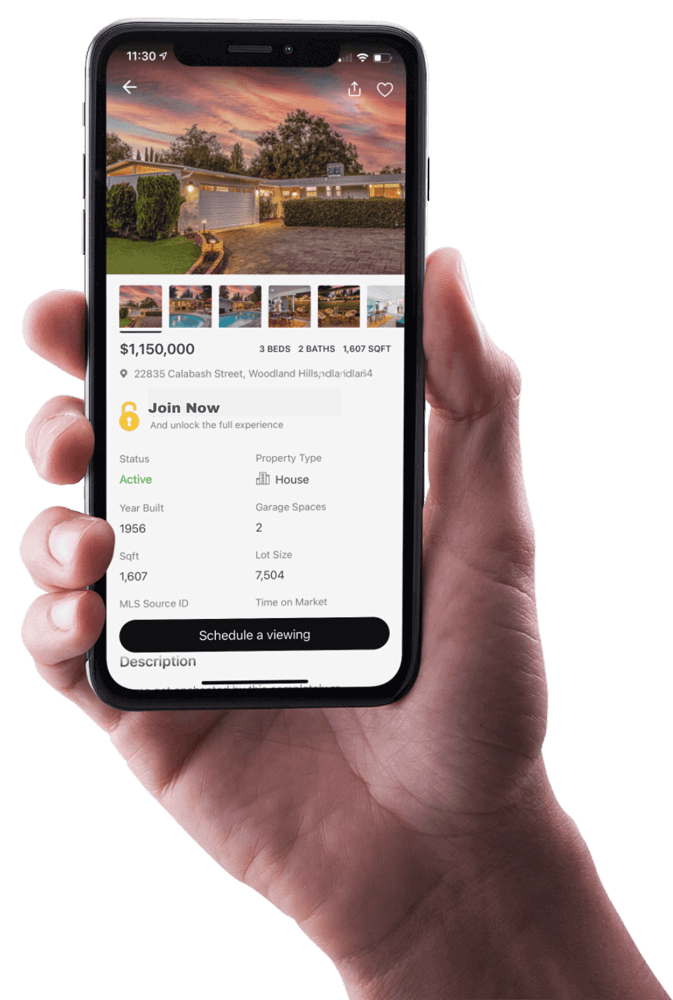
Zillow has just released its latest housing market forecast for 2025, revealing critical insights on home values and sales trends. With a significant downgrade from previous projections, it's essential for homebuyers and sellers to understand the shifting landscape of the real estate market and what it means for their decisions this year.
Introduction to Zillow's Forecast
Zillow's latest housing market forecast for 2025 provides a crucial lens through which potential buyers, sellers, and investors can gauge the upcoming trends in the real estate landscape. With forecasts indicating a weaker growth trajectory for home values, it’s vital to understand the implications of these predictions on the Utah housing market. As we delve into the specifics, it’s clear that both buyers and sellers need to adjust their strategies to navigate this evolving environment.
Overview of Home Value Growth Expectations
According to Zillow, home value growth is expected to decelerate significantly in 2025, with an anticipated increase of only 0.9%. This marks a substantial downgrade from earlier predictions that suggested a growth of 2.9%. The implications of this adjustment are profound, especially for homeowners in Utah who may have been banking on a more robust appreciation of their property values. This subdued growth can be attributed to a combination of rising inventory levels and a cooling demand, which has led to a more balanced market. Homeowners looking to sell might need to recalibrate their expectations regarding pricing strategies.
Comparison with Previous Years' Home Sales
The forecast indicates that existing home sales are projected to rise slightly, with estimates suggesting about 4.11 million transactions in 2025. While this represents a marginal increase compared to 2024, it is still significantly below pre-pandemic levels. This trend reflects a broader pattern observed over the past few years, where sales have remained muted, largely due to high mortgage rates and affordability challenges. For Utah's real estate market, this could mean fewer opportunities for sellers to capitalize on high demand, as buyers remain cautious amidst rising costs.
Current Mortgage Rates and Their Impact
Current mortgage rates play a pivotal role in shaping buyer behavior. As of now, average 30-year fixed mortgage rates hover around 7%, a level that has persisted for several months. This elevated rate continues to place pressure on affordability, discouraging many potential buyers from entering the market. In Utah, where home prices have surged in recent years, the combination of high rates and rising property values creates a challenging environment for first-time buyers and those looking to upgrade. The forecast suggests that while mortgage rates may see slight reductions, they will remain a significant barrier to homeownership for many.
Rising Housing Inventory: A Silver Lining?
Interestingly, there is a silver lining in the form of rising housing inventory. Zillow's data indicates a notable increase in new listings, with January 2025 experiencing a 60.7% rise in month-over-month new listings compared to December. For potential buyers, this influx of inventory can provide more options and potentially lead to better negotiating power. However, it’s essential to note that despite this rise, inventory levels are still below pre-pandemic numbers, suggesting that while there is more supply, it may not be sufficient to meet the demand in the long run.
Fannie Mae's Mortgage Rate Forecast
According to Fannie Mae's projections, the average 30-year fixed mortgage rate is expected to be around 6.8% in 2025, with a slight decrease to 6.5% by 2026. This forecast reflects a cautious optimism about the potential for improved affordability in the coming years. For Utah residents, understanding these trends is crucial for making informed decisions about purchasing or refinancing homes. With rates potentially stabilizing, buyers may find new opportunities to enter the market, albeit still facing the challenge of high home prices.
Zillow's Adjusted Home Value Predictions
With Zillow adjusting its home value predictions to a mere 0.9% increase for 2025, it’s evident that the market is experiencing a significant shift. This adjustment highlights the importance of understanding local market conditions in Utah. Homeowners may need to adapt their expectations and strategies, particularly in areas where inventory is rising and demand is flattening. For buyers, this could represent an opportunity to negotiate better terms, as sellers may be more willing to adjust their prices in light of the new market realities.
January Listings and Inventory Trends
January 2025 has set a precedent with a 61% increase in new listings compared to December, signaling a shift in market dynamics. This surge in inventory is crucial for buyers who have faced a tight market in previous years. However, while the increase is promising, it’s essential to note that active listings remain lower than pre-pandemic levels by approximately 26%. For Utah buyers, this means that while options are expanding, there remains a competitive edge in certain areas. Understanding these trends can help buyers make more strategic decisions in their search for homes.
Regional Differences in Housing Supply
Utah's housing market is not monolithic; it varies significantly from region to region. Cities like Salt Lake City and Provo are experiencing unique challenges compared to more rural areas such as Cedar City or St. George. The urban centers are grappling with a tight inventory, while some suburban and rural areas are seeing an uptick in available homes.
For instance, in Salt Lake City, the demand remains high, yet inventory levels are still approximately 26% lower than pre-pandemic figures. This scenario creates a competitive market where buyers often face bidding wars. Conversely, areas like St. George, with its growing popularity among retirees and vacationers, are seeing a different dynamic. The influx of new residents is driving demand, but the inventory is beginning to stabilize, allowing for more balanced negotiations.
Projected Home Sales for 2025
The projections for home sales in Utah for 2025 appear cautiously optimistic, with estimates suggesting about 4.11 million existing home sales nationwide. This figure aligns closely with trends observed in Utah, where home sales are expected to reflect a mild increase. However, this is still significantly below the average sales figures seen prior to the pandemic.
In Utah, particularly in urban areas, sales may be buoyed by the growing number of new listings. As more homeowners decide to sell, buyers could find better opportunities to negotiate favorable terms. Nonetheless, the overall sentiment remains one of caution, as prospective buyers face challenges from elevated mortgage rates and affordability concerns.
Comparative Forecasts from Other Companies
When comparing Zillow's forecasts with those from other organizations, a consistent theme emerges: while home sales may see slight increases, significant growth in home values is not anticipated. Fannie Mae's projection of 4.18 million transactions in 2025, with a home price increase of 3.5%, contrasts with Zillow's more conservative outlook of a mere 0.9% increase.
Redfin's forecast also suggests a range of 4.1 to 4.4 million sales, with a home price increase of 4%. This variance among forecasts highlights the uncertainty in the market, with each company responding to different economic indicators. For Utah homeowners, understanding these projections can inform their selling strategies and help them make informed decisions in a fluctuating market.
Inventory Levels Compared to Historical Data
Understanding current inventory levels in Utah requires a look back at historical data. The National Association of Realtors has documented that inventory levels are at a historic low, with only 1.18 million homes available for sale nationwide, which is down about 66% from the all-time high in 2017. This scarcity is felt acutely in Utah, where active listings remain significantly lower than pre-pandemic levels.
This historical context is essential for both buyers and sellers. For buyers, the limited supply can create a sense of urgency, while sellers may need to adjust their expectations based on the available inventory and market conditions. As new listings increase, particularly in urban areas, it may provide a brief respite for buyers looking for more options.
The Future of Rental Markets
The rental market in Utah is poised for growth, especially as many potential homebuyers opt to remain renters due to high prices and mortgage rates. Zillow forecasts that single-family rents will likely increase at a faster pace than multifamily rents, primarily due to a slowdown in multifamily construction. This trend presents unique opportunities for investors looking to capitalize on the growing rental demand.
For renters, this may mean facing higher rental costs in the coming years. However, it also presents a chance for landlords to reassess their pricing strategies and improve their properties to attract tenants. Understanding these dynamics can help both renters and landlords navigate the evolving rental landscape in Utah.
Conclusion and Call to Action
As Utah's housing market continues to evolve, it is crucial for potential buyers, sellers, and investors to stay informed about the latest trends and forecasts. The projected growth in home sales, combined with rising inventory levels, indicates a shifting landscape that can offer opportunities for those prepared to navigate its complexities.
For those looking to buy or sell in Utah, accessing up-to-date information and insights is essential. Regularly reviewing market trends and forecasts can empower individuals to make informed decisions that align with their personal and financial goals. To explore properties and learn more about the Utah housing market, visit Best Utah Real Estate.
FAQs About the 2025 Housing Market
- What are the expected home values in 2025? Home values are projected to increase by only 0.9%, indicating a shift in market dynamics.
- Will home sales increase in Utah? Yes, home sales are projected to rise slightly, with estimates suggesting around 4.11 million transactions nationwide.
- How will mortgage rates affect the market? Elevated mortgage rates are likely to dampen demand, making it more challenging for buyers to enter the market.
- What should sellers expect in this market? Sellers may need to recalibrate their pricing strategies based on rising inventory and changing buyer expectations.
Related Articles:
- Utah Buyers Market
- Utah Worth The Move Exploring The Pros And Cons Of Living In The Beehive State
- 10 Strategies To Paying Off Your Mortgage Faster
- How To Buy Foreclosures In Utah
- 7 Community Amenities That Transform A House Into A Home
- Unlocking The Dream Utah First Time Home Buyer Grants
- Deciding To Sell Or Keep Your Rental Property
- The Difference Between Real Estate Salespersons Brokers And Realtors
- 10 Lies That Realtors Tell Home Sellers
- 10 Secrets To Selling Your Utah Home Faster
- Home Sale Forecast Fannie Maes Revised Outlook Through 2025
- Fractional Ownership Vacation Homes Utah









